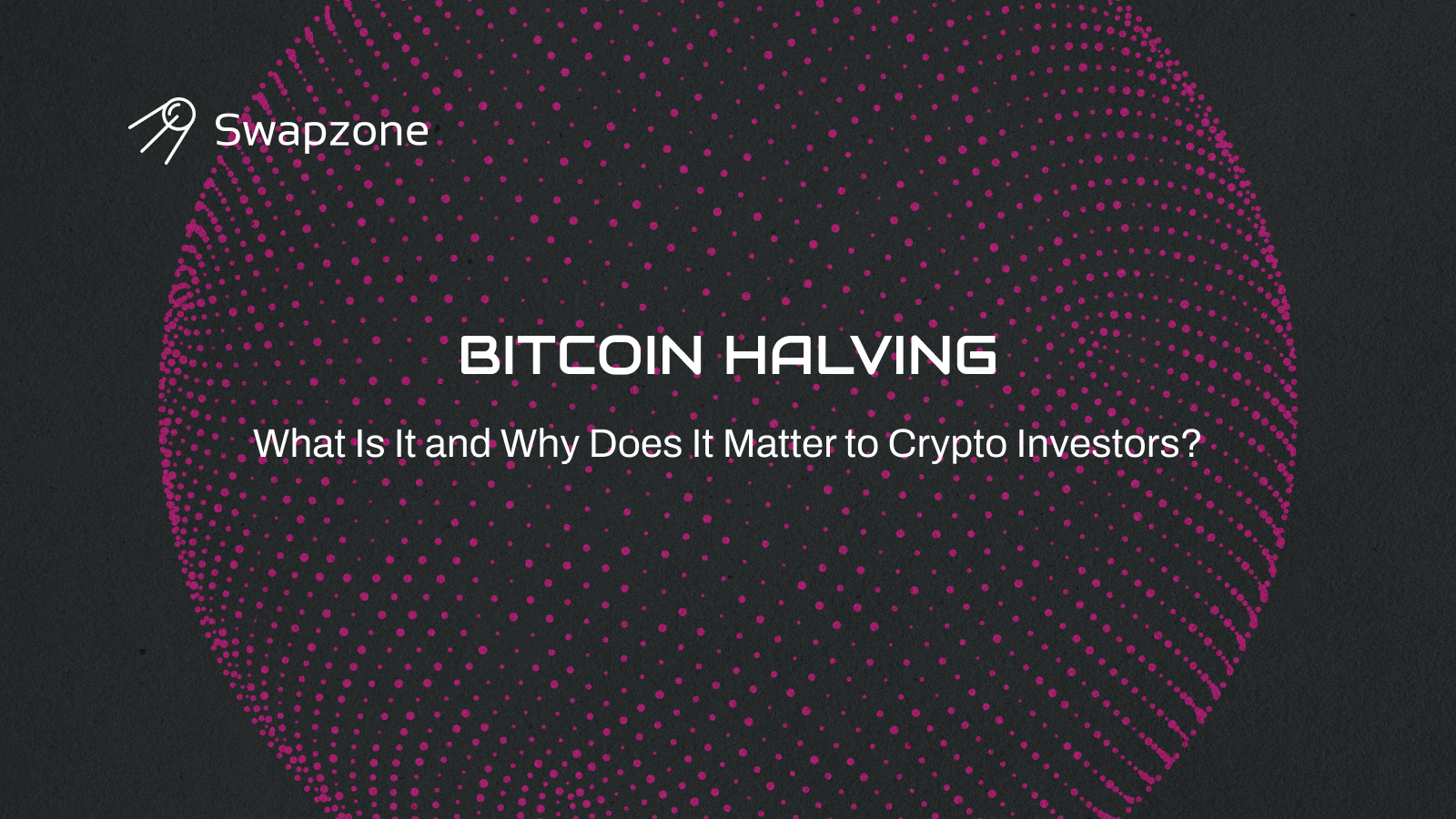The event of halving in Bitcoin is one of the most expected and discussed moments in the sphere of cryptocurrencies. It occurs every four years and affects the Bitcoin supply and price in a rather tangible manner. But what is a halving in the first place, and why does it seem so important for equity investors?
Demystifying Bitcoin Halving
As with conventional money systems, Bitcoin has a fixed money supply that cannot be printed. It is currently limited to 21 million bitcoins. New bitcoins are created when mined or produced to incentivize the miners to perform the necessary work of validating the transactions. First, the system’s reward was fixed at 50 BTC per block.
However, Satoshi Nakamoto, the creator of Bitcoin, socialized the rewards to decrease in half every 2, 10, and 4 years for every 210,000 blocks. This special event in Bitcoin’s cycle is known as the Bitcoin halving.
So far, there have been three Bitcoin halvings:
- November 2012 – The 25 BTC block reward is reduced from the previous 50 BTC.
- July 2016 – This was done by cutting the block reward in half from 25 BTC to 12.5 BTC.
- May 2020 – Halving rate: block reward decreased from 12.5 BTC to 6.25 BTC
- Aprril 2024 – resulting in a block reward of 3.125 BTC
- The final halving is expected to occur in 2140, when the number of bitcoins circulating will reach its maximum supply of 21 million.
Further reduction of the reward should take place in 2024.
Halving Process
The halving event leads to the cutting of the flow of new bitcoins into the market by halving it, meaning that the rate at which new coins are introduced to the market is reduced. The halving process sees the number of BTC miners earned for every block verified cut in half from the previous cycle. Gradually, the rewards for mining decrease, but the scarcity of new bitcoins increases the price of each BTC. This mechanism has several notable consequences:
- Reduced Minting—Halving reduces the rate at which new bitcoins are produced, thus limiting the existing supply of bitcoins in the market and putting deflationary pressure on the currency. As new bitcoins’ creation rate slows and their desirability continues to increase, freshly minted bitcoins are becoming scarcer and more difficult to come by to meet this demand. The following supply-demand gap contributes to more increases in valuations.
- These claims mean that Bitcoin is even more scarce than before, which is one of the hallmarks of a good speculative asset and potential digital currency. Satoshi Nakamoto—the mysterious creator of Bitcoin—chose a finite number of 21 million coins to be the cryptocurrency’s quantity. This built-in scarcity sets it apart from national currencies that can print endless amounts of their currencies with quantitative easing.
- Reward is still available—The network’s security remains while the rewards have been reduced to levels that may not motivate Bitcoin miners. Furthermore, the price increase in Bitcoin after halvings can also support the decline in block rewards, as shown in the tables above.
Halving events are crucial for Bitcoin since they provide a mechanism that does not allow for an out-of-control emission rate of new coins, maintains the concept of scarcity in digital form, and, most importantly, gives it value. Halvings enable Bitcoin to retain value and purchasing power and avoid inflation where fiat currencies are debased. These dynamics make halvings and the following period important to most crypto asset investors and advocates.
Halving Matters
This move is significant as it influences one of the most essential factors of any currency’s worth—availability. This reduces the amount of new bitcoins circulating in the economy over some time because the block reward is halved. This decline in the supply of bitcoins from other sources is accompanied by increasing demand for bitcoins, hence inflating the price per bitcoin.
In effect, halving seeks to replicate the scarcity factor accompanying assets such as metals in its supply. This acts as a programmed increase in supply that helps control inflation. Investors look forward to major price movements immediately after the halvings, which happen periodically. The embedded system supply limits sustain Bitcoin’s adoption as a store of value and inflation hedge in the long term.
Historical Perspective
Bitcoin halving is the preprogrammed block reward reduction that goes to the miners at an interval of 210000 blocks or approximately four years. This halving has happened before on two occasions, the first being in the year 2012 and the second time in the year 2016. Every single time, the bitcoin price has risen significantly within the year after the halving of the bitcoin mining process. For instance, the first time that the bitcoin halving occurred in 2012, the value of bitcoin rose by more than 10,000 percent. This second halving occurred before one of the most significant crypto bull runs in the history of cryptocurrencies in 2017.
However, there is a pattern in the cryptocurrency market where the price periodically fluctuates around these halvings. Many blockchain analysts believe that the halving that occurred in 2024, given the current rate of block generation, was the catalyst for the next halving. Many are eagerly awaiting the signal that usually follows a halving of mining rewards: we are in for another Bitcoin growth cycle.
Impact on the Miners
The halving of the coin means they will have to make drastic changes to their operations as miners who secured the Bitcoin network. By reducing the block rewards by half, an overnight cut on incomes that constitute almost all of their revenues exerts pressure on profitability.
More marginal miners tend to decommission lower-performing machinery following halvings. In this region, the hash rates of the networks decrease before they start to increase. Because of this, halvings affect the less efficient hashing power and the older rigs, which need to be more profitable to cover costs. The market generally stabilizes again over time because of the fluctuations in mining-related difficulty levels.
The bitcoin halving mechanism decreases the inflation rate and the new supply issuance of the cryptocurrency every four years. This pre-programmed supply shock acts as market disturbance and price inflation. For crypto investors and miners, halving events always calls for constant vigilance on the network activities and the need to set certain adjustments. While halvings are disruptive in the short term, they are a key mechanism that underlines Bitcoin’s digital scarcity.
Investor Strategies
The term bitcoin halving describes a pre-planned event that occurs every four years: the slowing down of the rate of new bitcoins produced through mining. In conformity with Bitcoin’s money supply rules, the incentive for miners in Bitcoins is halved at the set block. This, in a way, would make the availability of Bitcoin progressively decline as more Bitcoins are not being created and introduced into circulation.
For any holder of crypto assets, the concept of bitcoin halving has a profound meaning for holding investment strategy. Due to this, basic economics dictates that – assuming everything else holds constant – the bitcoin price could increase as demand shoots up beyond a limited supply of the cryptocurrency after halving. Therefore, some investors purchase bitcoins in anticipation of the event and sell them upon halving implementation to gain large profits. Nevertheless, it has become common knowledge and is priced in the markets. Hence, there is no guarantee that there will be gains.
Critical to note in Bitcoin is that patience is sometimes required, especially during halvings. The impacts generally have a long-lasting nature, which may take time to manifest. This cryptocurrency has experienced three halvings in its history, in 2012, 2016, and 2020. This is seen in the rise in the value of Bitcoin, which increased to around 8,000% in the year following the 2012 event and around 300% following the 2016 event. In other words, investors should regard halving as a chance to embark on a longer-term crypto exchange instead of trying to reap quick gains. Portfolio rebalancing can also occur while retaining an investment position, and this can be done periodically to have a chance at making profits.
What Should You Pay Attention To?
As with Bitcoin, although halvings can benefit the price of the commodity in the long run, they bring about short-term volatility. Bitcoin mining is a costly process due to the use of CPU, GPU, and energy. These factors can be captured by the fact that fewer rewards are earned per block after halvings, and profitability might be compromised. Some miners are obliged to cease operations because of the situation.
This hashrate reduction in Bitcoin mining may pose some threat to the security and transaction throughputs in the system. Investors should thus pay attention to the mining hash rate in the months preceding and following a halving as a means of gauging both stability and user experience. A decrease in the hash rate for a long period or a significant drop could potentially become a reason for investors’ lack of confidence.
It is also important to remember that, like any hyped technological breakthrough, people’s expectations must be tempered with realism when it comes to Bitcoin halvings. Due to halvings, they are embedded in code, and everyone expects price increases to kick in, making it self-fulfilling. This attracts more attention from the media and creates too much optimism, which leads to bubble formation. So, data instead of emotions should be used when examining the value of Bitcoin among experienced investors during halving events.
Pragmatic Investor Advice
Therefore, avoid over-commitment and quick decisions. Panic and avarice, in general, reach their highest levels right before halvings. Fund owners should know how much of the funds they want to allocate for a certain plan and how long they want to do so they do not over-commit themselves. Some people still use it and its volatility to speculate and make fast money, while others lose their investments within a short time. If you are considering investing in these assets, remember to only put in money you are willing to lose and diversify it with more secure stakes.
Secondly, and most importantly, we should look at the long run rather than short-term price fluctuations, such as on daily or weekly charts. Bitcoin halvings are more of a long-term proposition. Their effects are gradual. It may take several months or much longer before demand succeeds in offsetting diminished supply. However, do not overcomplicate volatility and other short-term fluctuations in the market.
Last but not least, carry out personal research on what happened. Understand Bitcoin as a digital scarce asset and how economic factors impact pricing strategies in the long run. Knowledge dispels irrational exuberance. Discipline and research give Bitcoin halvings a reasonable chance to make quite reasonable profits for more reasonable investors. Timing the market with entries and exits is impossible, so the best bet is to stay invested in the long run.
Conclusion
The Bitcoin halving event is an important issue affecting the supply, mining industry, and the development of this cryptocurrency market. Knowing this situation will teach new investors tips for making the right investment decisions. While halvings have historically been very successful for Bitcoin, overall market sentiment and associated risks should always be considered. By understanding Bitcoin facts and strategies, investors can easily navigate the complex world of cryptocurrency investing by understanding Bitcoin’s unique features.


